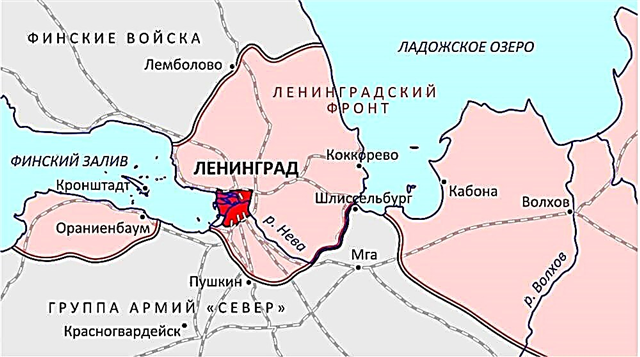You live in the taiga wilderness, you have no electricity and no connection with the outside world. This hypothetical to the point of impossibility is the only opportunity in the modern world not to use computers. Even watches have to be mechanical - any electronic watch has a primitive processor.
Modern civilization is impossible without computers. And it's not even about our favorite personal computers, laptops and smartphones. The world can do without them. Yes, someone will have to write with a ballpoint pen and draw with paints, but such skills are not completely lost. But the management of the most complex production processes or transport without computers is simply impossible. Although just a few decades ago, everything was different.
1. Production of the world's first electronic computer ENIAC, created in the USA in 1945, cost $ 500,000. The 20-ton monster consumed 174 kW of electricity and contained more than 17,000 lamps. The data for calculations were entered into the first computer from punched cards. In order to calculate the extremely simplified parameters of the explosion of a hydrogen bomb, more than a million punch cards were required. In the spring of 1950, ENIAC tried to create a weather forecast for the next day. It took so much time to sort and print punched cards, as well as to replace the failed lamps, that the calculation of the forecast for the next 24 hours took exactly 24 hours, that is, instead of the round-the-clock fuss around the car, the scientists just looked out the window. Nevertheless, the work on the weather forecast was considered successful.
2. The first computer game appeared in 1952. It was created by Professor Alexander Douglas as an illustration for his doctoral dissertation. The game was called OXO and was a computer implementation of the Tic-Tac-Toe game. The playing field was displayed on the screen with a resolution of 35 by 16 pixels. A user playing against a computer made moves using a telephone disk.
3. In 1947, the Army, Air Force, and the US Census Bureau ordered a powerful computer to the firm of John Eckert and John Mauchly. The development was carried out exclusively at the expense of the federal budget. By the next census, they did not have time to create a computer, but nevertheless, in 1951, customers received the first machine, called UNIVAC. When Eckert and Mauchly's company announced its intention to release 18 of these computers, their colleagues at a conference decided that such a number would saturate the market for years to come. Before UNIVAC computers became obsolete, Eckert and Mauchly had just released 18 machines. The last one, which worked for a large insurance company, was shut down in 1970.
4. As of the summer of 2019, the title of the most powerful computer in the world is held by the American “Summit” for the second year. Its performance, calculated using standard Linapack benchmarks, is 148.6 million Gigaflops (the performance of home desktops is hundreds of Gigaflops). Summit occupies 520 m2 premises2... It is assembled from almost 1,000 22-core processors. The supercomputer's cooling system circulates 15 cubic meters of water, and it consumes about 8,000 average households. Summit cost $ 325 million. China is the leader in the number of supercomputers. There are 206 of these machines in operation in this country. 124 supercomputers have been installed in the United States, while there are only 4 in Russia.

5. The first hard drive was created by IBM for the US Air Force. According to the terms of the contract, the company was to create a card index for 50,000 items and provide instant access to each of them. The task was completed in less than two years. As a result, on September 4, 1956, the public was presented with a 1.5-meter cabinet with a height of 1.7 meters and weighing almost a ton, called the IBM 350 Disk Storage Unit. The world's first hard drive contained 50 disks with a diameter of 61 centimeters and contained 3.5 MB of data.
6. The smallest processor in the world was created by IBM in 2018. A chip with a size of 1 × 1 millimeter, containing several hundred thousand transistors, is a full-fledged processor. It is capable of receiving, storing and processing information at the same speed as the x86 processors released in the 1990s. This is definitely not enough for modern computers. However, this power is quite enough for solving most practical problems not related to "high" computer engineering or scientific calculations. The microprocessor can easily calculate the number of goods in warehouses and solve logistical problems. However, this processor has not yet gone into mass production - for modern tasks, even if the cost price is around 10 cents, its diminutiveness is excessive.
7. The world market of stationary computers has been demonstrating negative dynamics for 7 years - the last time sales growth was recorded in 2012. Even a statistical trick did not help - laptops, which, in fact, are closer to mobile devices, were also enrolled in stationary computers. But this notion made it possible to make a good face with a bad game - the fall of the market is calculated by a few percent. Nevertheless, the trend is clear - an increasing number of people prefer tablets and smartphones.
8. For the same reason - the proliferation of tablets and smartphones - the data on the number of personal computers in different countries of the world are becoming obsolete. The last such calculation was carried out by the International Telecommunication Union back in 2004. According to these data, the most computerized state was tiny San Marino - a small enclave located in Italy. There were 727 desktops per 1,000 inhabitants in San Marino. The United States had 554 computers per thousand people, followed by Sweden with one computer for every two people. Russia with 465 computers ranked 7th in this rating. Later, the International Telecommunication Union switched to the method of counting Internet users, although it seems to be no less controversial - is a person using a stationary computer, laptop, tablet and smartphone connected to the Internet, is this one user or 4? Nevertheless, some conclusions can be drawn from these statistics. According to her, in 2017, residents of Norway, Denmark, the Falkland Islands and Iceland were almost completely connected to the Internet - the indicator of “Internet penetration” in their territories exceeded 95%. However, the density of results is off scale. In New Zealand, ranked 15th, 88% of residents have the Internet. In Russia, 76.4% of citizens are connected to the World Wide Web - 41st in the world.

9. Computer smilies, or, in other words, emoticons, are a vivid evidence of how sometimes professional unsuitability changes the world. In 1969, Vladimir Nabokov, the author of the novel "Lolita", proposed to introduce a graphic sign denoting emotions. What could be more interesting - the artist of the word suggests replacing words with symbols, returning back to runes or cuneiform writing! Nevertheless, the voiced idea, as we can see, has been implemented in practice. Scott Fallman, who consistently defended his master's and doctoral dissertations at the Massachusetts Institute of Technology, became known in the world not because of his ingenious work in the field of neural and semantic networks, but thanks to the invention of the symbols 🙂 and :-(.
10. Dozens of books have been written about a possible uprising of a supercomputer (or, alternatively, a computer network) against people. And this avalanche of horrors of a high and not so high level absorbed the initial message of the authors of the idea of the “machine uprising”. But he was pretty sane. From the point of view of bare computer logic, human behavior looks inappropriate, and sometimes absurd. What are just the rituals associated with the concepts of "cooking" and "procreation"! Instead of taking food in its original form or carrying out a simple mating of a male with a female, people tire themselves with extremely irrational procedures. Therefore, the classic "uprising of the machines" is not a desire to subjugate human society. This is the desire of computers that suddenly acquired intelligence to facilitate, rationalize people's lives.
11. In the 1980s in the Soviet Union, fans of the first computer games did not buy discs with them, but magazines. Today's users should appreciate the dedication of early gamers. It was necessary to buy a magazine in which the game code was printed, enter it manually from the keyboard, start and save the game to the then analogue of a flash drive - a tape cassette. After such a feat, installing the game from a cassette already looked like child's play, although the cassette tape could break. And then ordinary TVs served as a monitor.
12. The effect when a dictionary, word processor or mobile device begins to think for a person while typing, correcting incorrectly typed words, according to machine intelligence, is called the “Cupertino Effect”. However, the town of Cupertino, located in the US state of California, has a very indirect relationship to this name. In the first word processors, the English word “cooperation” was hyphenated - “co-operation”. If the user typed this word together, the processor automatically changed it to the name of an unknown American town. The error was so widespread that it penetrated not only the pages of the press, but also official documents. But, of course, until the current madness with the T9 function, it remained nothing more than a funny curiosity.









